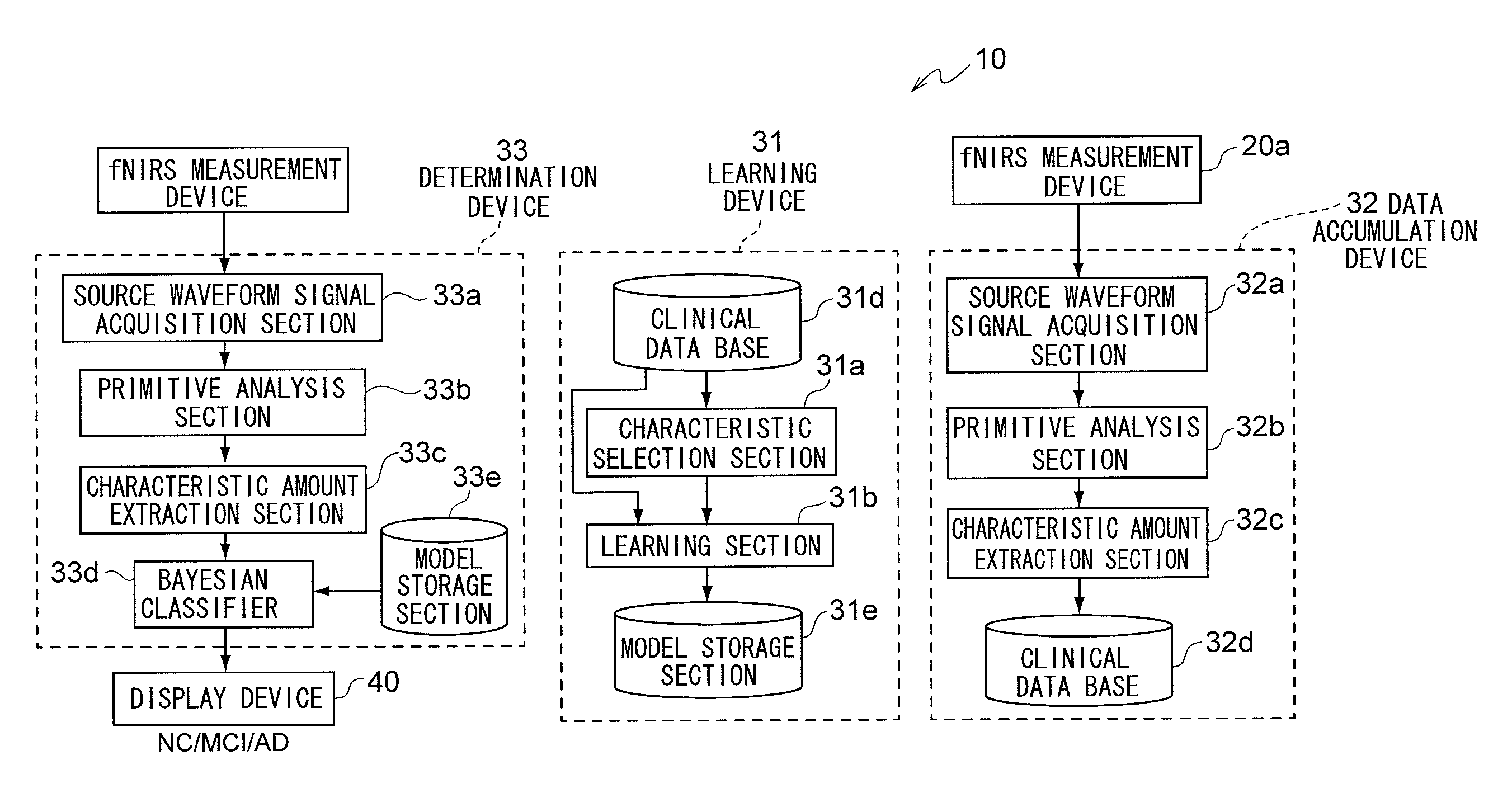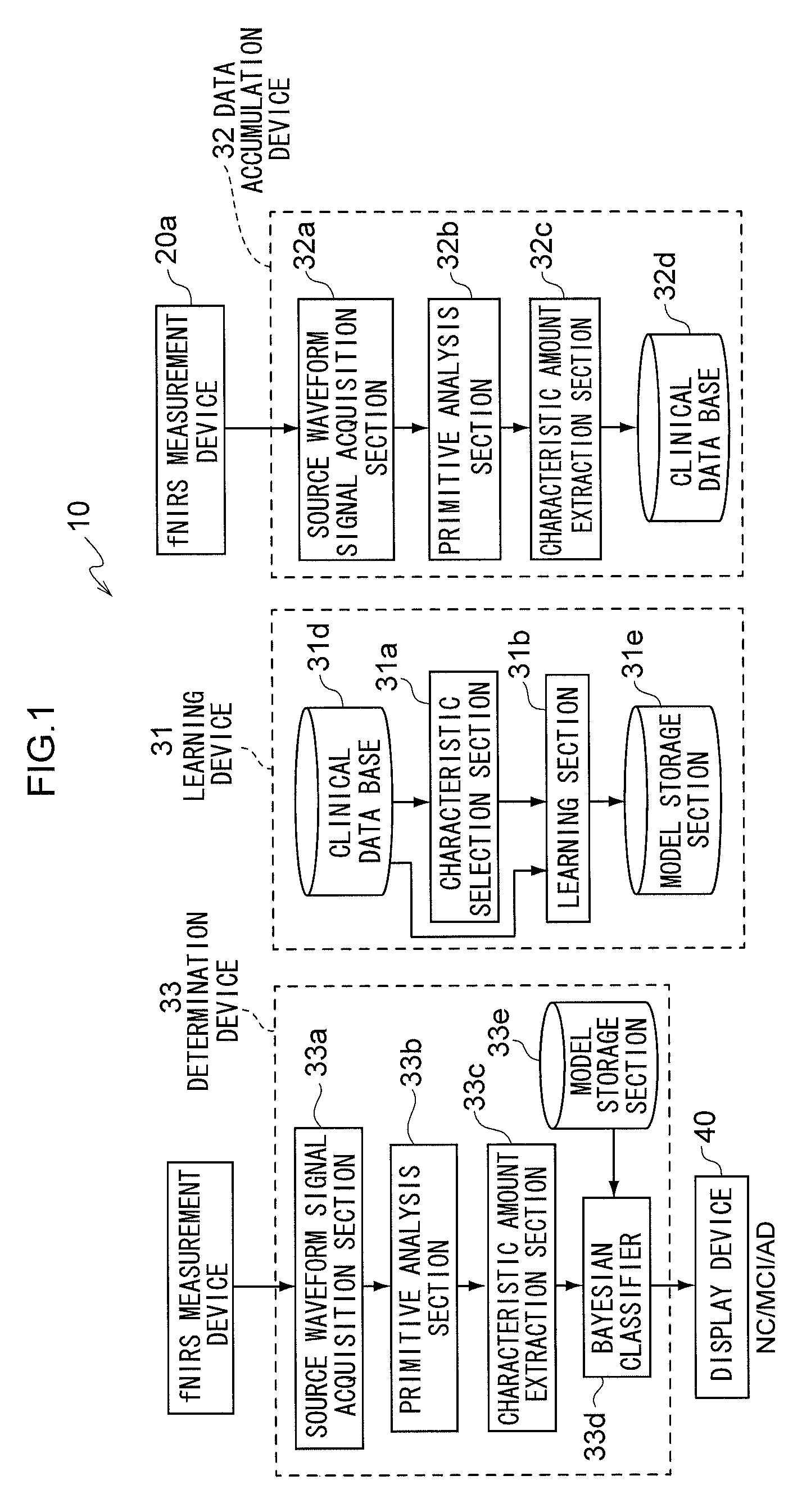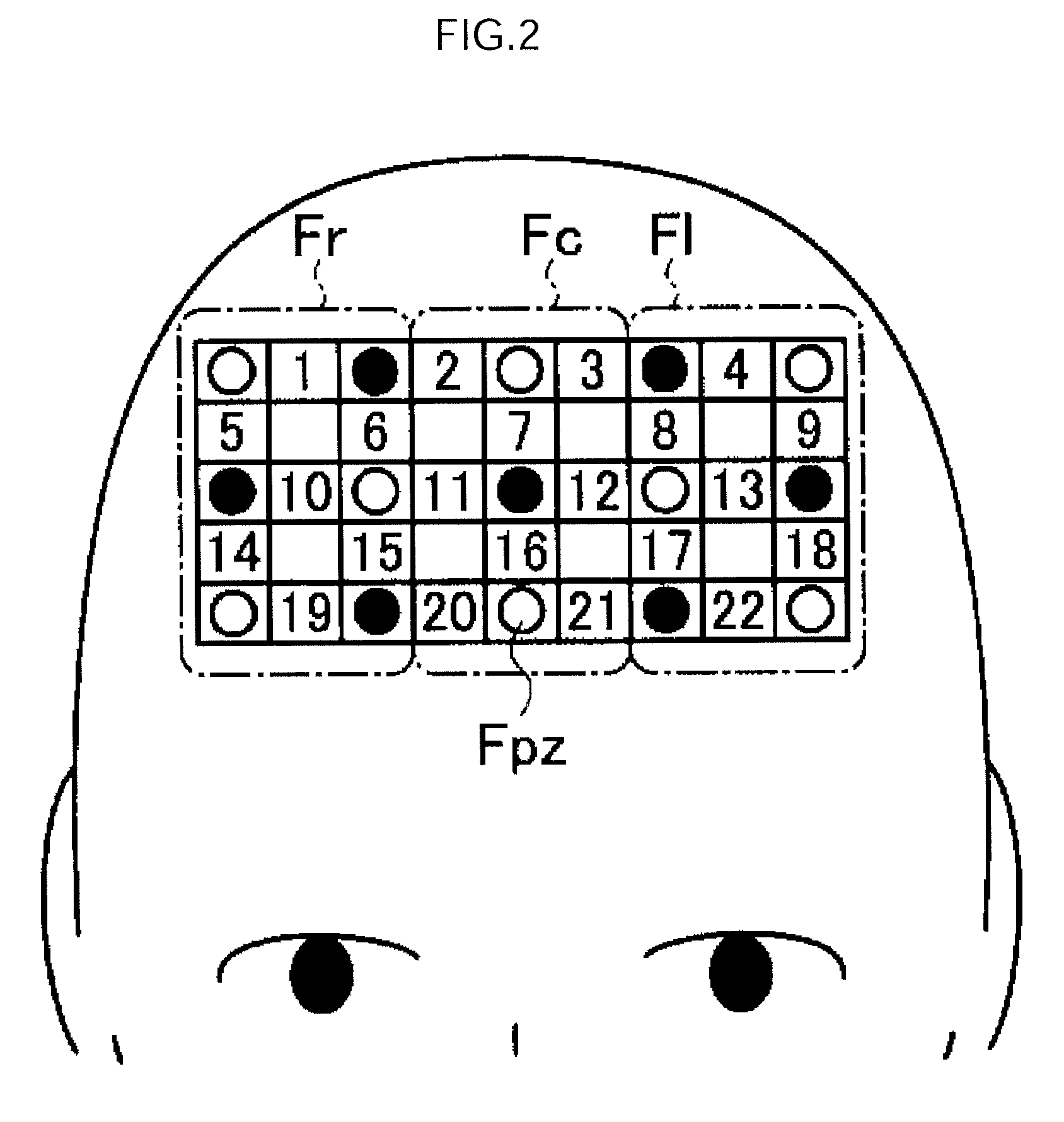Cognitive impairment determination apparatus, cognitive impairment determination system and program
a cognitive impairment and determination apparatus technology, applied in the field of cognitive impairment determination apparatus, can solve the problems of not being suitable for mass early stage screening of elderly people, affecting the treatment of other outpatients, and taking 5 to 20 minutes by the doctor to perform the investigation
- Summary
- Abstract
- Description
- Claims
- Application Information
AI Technical Summary
Benefits of technology
Problems solved by technology
Method used
Image
Examples
Embodiment Construction
[0036]Detailed explanation follows regarding an exemplary embodiment of the present invention, with reference to the drawings. Note that in the present exemplary embodiment there is no need for a particular measurement environment, and cerebral function during task execution may be measured in a natural position, with attention given to vital signals obtained from functional near-infrared spectroscopy (also referred to below as “fNIRS”). Explanation follows regarding the present exemplary embodiment in an example of the present invention applied to dementia screening performed using cerebral function measurement data from an elderly person during cognitive task test execution.
[0037]Note that fNIRS is a known technique for measuring hemoglobin flow inside a brain using near-infrared light, and the technique is non-invasive and requires little restraint of the person to be measured (referred to below as the test subject), enabling comparatively simple measurement without test environm...
PUM
 Login to View More
Login to View More Abstract
Description
Claims
Application Information
 Login to View More
Login to View More - R&D
- Intellectual Property
- Life Sciences
- Materials
- Tech Scout
- Unparalleled Data Quality
- Higher Quality Content
- 60% Fewer Hallucinations
Browse by: Latest US Patents, China's latest patents, Technical Efficacy Thesaurus, Application Domain, Technology Topic, Popular Technical Reports.
© 2025 PatSnap. All rights reserved.Legal|Privacy policy|Modern Slavery Act Transparency Statement|Sitemap|About US| Contact US: help@patsnap.com



